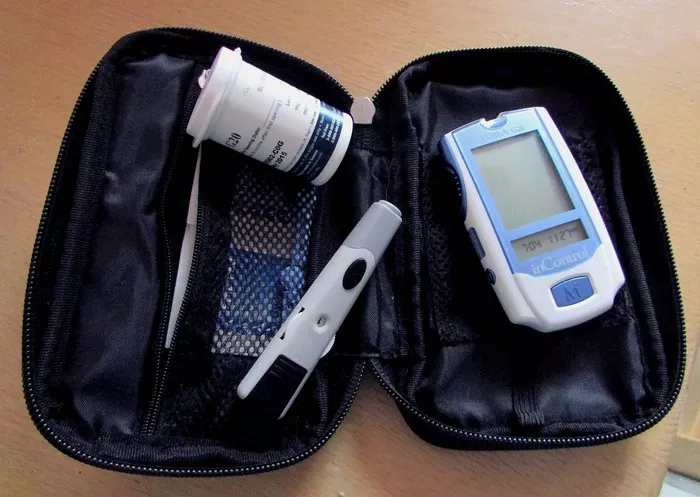Type 2 diabetes is a chronic condition that affects how the body processes glucose (sugar). Unlike Type 1 diabetes, where the body’s immune system attacks insulin-producing cells in the pancreas, Type 2 diabetes primarily involves insulin resistance, where the body’s cells do not respond effectively to insulin. As a result, glucose accumulates in the bloodstream, leading to elevated blood sugar levels. While Type 2 diabetes is often associated with obesity, sedentary lifestyles, and poor diet, it can also develop in individuals who appear otherwise healthy. This article explores the various factors contributing to the onset of Type 2 diabetes in seemingly healthy adults, providing a comprehensive understanding of the condition’s multifactorial nature.
Understanding Type 2 Diabetes
Type 2 diabetes is characterized by two primary issues:
Insulin Resistance: The body’s cells become less responsive to insulin, a hormone produced by the pancreas that facilitates glucose uptake from the bloodstream into cells. As a result, the body requires more insulin to achieve the same glucose-lowering effect.
Impaired Insulin Secretion: Over time, the pancreas may struggle to produce enough insulin to meet the body’s increased demands, leading to elevated blood sugar levels.
The condition develops gradually and may be present for years before symptoms become noticeable. Early detection and management are crucial in preventing complications such as cardiovascular disease, neuropathy, nephropathy, and retinopathy.
Risk Factors for Type 2 Diabetes in Healthy Adults
Type 2 diabetes can develop in individuals who do not exhibit the typical risk factors, such as obesity or a sedentary lifestyle. Understanding the underlying causes and contributing factors is essential for identifying and managing the condition effectively.
Genetic Predisposition
Genetics play a significant role in the development of Type 2 diabetes. A family history of the condition increases the likelihood of developing it, even in individuals who maintain a healthy weight and lifestyle. Specific genetic variations have been identified that affect insulin sensitivity, glucose metabolism, and pancreatic function.
Certain gene variants are associated with an increased risk of Type 2 diabetes, influencing factors such as beta-cell function, insulin signaling, and glucose uptake. However, genetics alone do not determine the development of the disease; environmental and lifestyle factors also play a crucial role.
Metabolic Syndrome
Metabolic syndrome is a cluster of conditions that increase the risk of developing Type 2 diabetes and cardiovascular disease. It includes:
Insulin Resistance: Reduced ability of cells to respond to insulin.
Central Obesity: Excess fat around the abdomen, often measured by waist circumference.
Hypertension: Elevated blood pressure.
Dyslipidemia: Abnormal lipid levels, including high triglycerides and low HDL (good) cholesterol.
Even individuals with a normal body mass index (BMI) may have metabolic syndrome, particularly if they have central obesity and other metabolic abnormalities. This condition can predispose seemingly healthy adults to Type 2 diabetes.
Subclinical Inflammation
Chronic low-grade inflammation is another factor contributing to the development of Type 2 diabetes. Subclinical inflammation occurs when inflammatory markers are elevated despite the absence of overt symptoms. This type of inflammation can interfere with insulin signaling, leading to insulin resistance.
Inflammatory markers such as C-reactive protein (CRP) and interleukin-6 (IL-6) have been linked to an increased risk of Type 2 diabetes. Factors contributing to subclinical inflammation include poor diet, chronic stress, and exposure to environmental toxins.
Genetic Mutations and Rare Conditions
In addition to common genetic risk factors, rare genetic mutations can contribute to Type 2 diabetes. These include monogenic forms of diabetes, where a single gene mutation leads to a predisposition to the condition. For example, maturity-onset diabetes of the young (MODY) is a rare form of Type 2 diabetes caused by mutations in specific genes.
While these genetic mutations are relatively rare, they can cause Type 2 diabetes in otherwise healthy adults, often presenting at a younger age than typical Type 2 diabetes.
Hormonal Imbalances
Hormonal imbalances can affect glucose metabolism and increase the risk of Type 2 diabetes. Conditions such as polycystic ovary syndrome (PCOS) and Cushing’s syndrome involve hormonal disruptions that can lead to insulin resistance and elevated blood sugar levels.
PCOS, characterized by irregular menstrual cycles, excess androgen levels, and insulin resistance, is a significant risk factor for Type 2 diabetes in women. Cushing’s syndrome, caused by excess cortisol production, can also lead to insulin resistance and glucose intolerance.
Dietary Factors
Even in the absence of overt obesity, dietary choices can influence the risk of developing Type 2 diabetes. A diet high in refined carbohydrates, added sugars, and unhealthy fats can contribute to insulin resistance and glucose dysregulation. Conversely, a diet rich in whole grains, fruits, vegetables, and lean proteins supports healthy glucose metabolism.
Specific dietary patterns, such as the consumption of high-glycemic index foods, can lead to rapid spikes in blood sugar levels, increasing the risk of Type 2 diabetes over time. Additionally, frequent consumption of sugary beverages and processed foods can contribute to metabolic disturbances.
Sleep Disorders
Sleep disorders, particularly sleep apnea and chronic sleep deprivation, can affect glucose metabolism and increase the risk of Type 2 diabetes. Sleep apnea, characterized by repeated interruptions in breathing during sleep, can lead to insulin resistance and elevated blood sugar levels.
Chronic sleep deprivation disrupts the body’s circadian rhythm, affecting hormones that regulate appetite and glucose metabolism. Poor sleep quality is associated with increased hunger, cravings for unhealthy foods, and impaired insulin sensitivity.
Stress and Mental Health
Chronic stress and mental health conditions such as depression and anxiety can impact glucose metabolism and contribute to the development of Type 2 diabetes. Stress triggers the release of cortisol, a hormone that can increase blood sugar levels and promote insulin resistance.
Mental health conditions can also influence lifestyle factors, such as physical activity and dietary choices, further impacting diabetes risk. Addressing stress and mental health issues through therapy, relaxation techniques, and lifestyle modifications is important for reducing diabetes risk.
Environmental Exposures
Exposure to certain environmental toxins and pollutants can affect glucose metabolism and increase the risk of Type 2 diabetes. Chemicals such as persistent organic pollutants (POPs), heavy metals, and endocrine-disrupting chemicals (EDCs) have been linked to insulin resistance and metabolic disturbances.
These environmental factors can interfere with hormonal regulation and contribute to the development of Type 2 diabetes, even in individuals with otherwise healthy lifestyles.
Age and Aging Process
While Type 2 diabetes is more commonly associated with older adults, it can also develop in younger individuals. The aging process itself can contribute to the risk of Type 2 diabetes through mechanisms such as decreased muscle mass, reduced insulin sensitivity, and changes in fat distribution.
Aging is associated with metabolic changes that can affect glucose regulation, making it important for older adults to monitor their blood sugar levels and adopt a healthy lifestyle to prevent diabetes.
Prevention and Management Strategies
Understanding the causes of Type 2 diabetes in healthy adults can inform prevention and management strategies. Key approaches include:
Regular Monitoring: Routine blood sugar screenings and metabolic assessments can help identify early signs of insulin resistance and diabetes, even in individuals who appear healthy.
Balanced Diet: Adopting a diet rich in whole grains, lean proteins, healthy fats, and vegetables can support healthy glucose metabolism and reduce diabetes risk.
Regular Exercise: Engaging in physical activity improves insulin sensitivity and helps maintain a healthy weight. Aim for at least 150 minutes of moderate-intensity exercise per week.
Stress Management: Managing stress through relaxation techniques, mindfulness, and therapy can help regulate blood sugar levels and reduce the risk of diabetes.
Adequate Sleep: Prioritizing good sleep hygiene and addressing sleep disorders can improve glucose metabolism and reduce diabetes risk.
Weight Management: Maintaining a healthy weight through diet and exercise can help prevent insulin resistance and Type 2 diabetes.
Medical Evaluation: Regular check-ups with healthcare providers can help monitor risk factors and manage conditions such as hypertension, dyslipidemia, and hormonal imbalances.
See also: What is Late-Onset Type 1 Diabetes?
Conclusion
Type 2 diabetes is a multifaceted condition with various contributing factors that can affect even individuals who appear healthy. Genetic predisposition, metabolic syndrome, subclinical inflammation, hormonal imbalances, dietary factors, sleep disorders, stress, environmental exposures, and aging all play a role in the development of Type 2 diabetes.
Understanding these causes is essential for effective prevention and management of the condition. By adopting a healthy lifestyle, engaging in regular monitoring, and addressing risk factors proactively, individuals can reduce their risk of developing Type 2 diabetes and improve their overall health. Early detection and intervention are key to managing diabetes and preventing complications, ensuring a healthier and more fulfilling life.
Related topics:
What Type of Diabetes Causes Amputation?


























